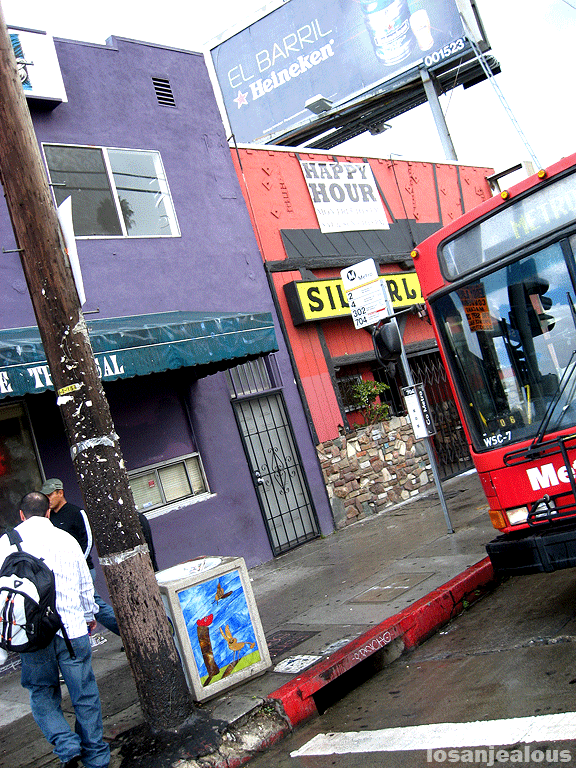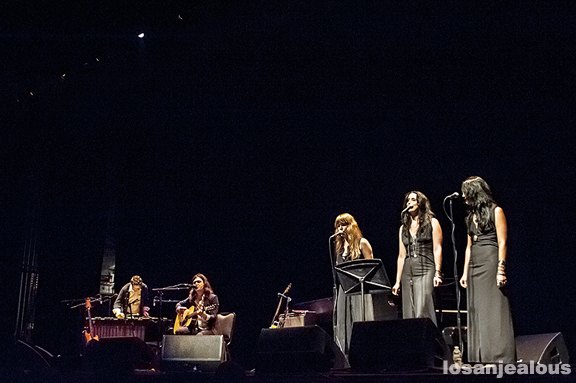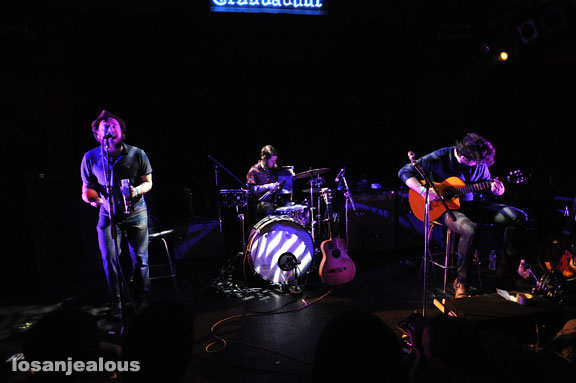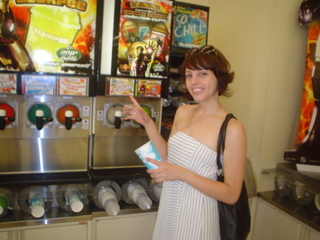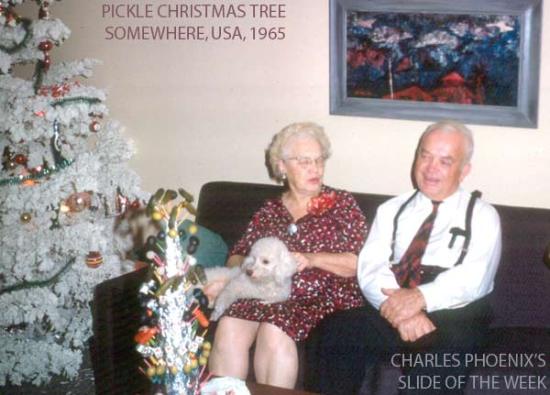Helios House: Gas Station of the Future?
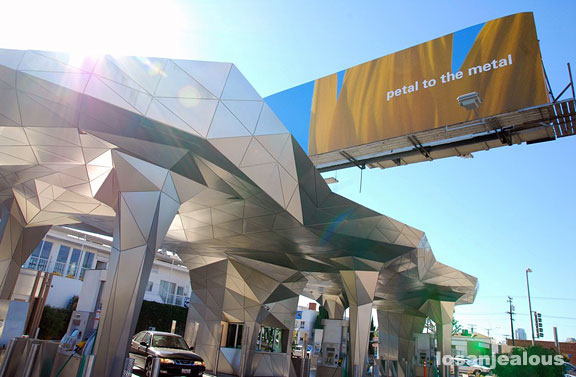
Is the current cultural emphasis toward environmental responsibility here to stay, or just a Gore-ified fad? Will we ever be able to breathe clean air in the city of angels or will we be mired in an ever-increasing cloud of CO? BP, the international oil company, shows where they stand on the ecological divide with the creation of the first LEED certified gas station in the country. And where else did they choose to setup shop other than our own car loving, petroleum guzzling, auto-status capital of the world. Wait a second–an oil company touting green architecture and sustainability? Isn’t that like Martha Stewart giving investment advice you may ask? Isn’t that like the Yankees helping the Dodgers (Oh wait–that actually happened.) Before you make up your mind, let’s give BP some credit for spending part of their gazillion profit dollars on a good cause, be it the environment or boost in public relations. Losanjealous took a tour of the premises–code named “Helios House”–to learn more about BP’s efforts.
Statistics
Name: Helios House
Location: Corner of Robertson & Olympic, Los Angeles
Architect: Office dA / Johnston Marklee
Birthday: March, 2007
LEED (Leadership in Energy and Environmental Design) Rating: Certified–one of only ten structures in the City of Los Angeles to date.
Types of Fuel Available: Unleaded gasoline only (so far, but BP plans on testing out alternative fuel pumps in the near future.)
Types of Service: Self-Serve only. (Attendants are all trained or have backgrounds in green issues and will gladly provide you with information on how you can contribute to helping the environment.)
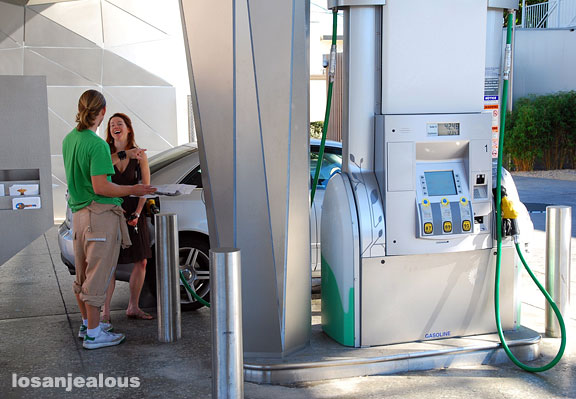
Convenience Store: N/A–That’s right, they don’t even sell cigarettes or lottery tickets. Not that it’s been proven that smokers and gamblers are less likely to recycle.
Design
Canopy: We’ll start here because it’s the most striking element in the design of the station. It’s huge and covers all of the pump bays. It houses 90 solar panels that supply power for the station. The canopy is clad in triangular stainless steel panels that are completely recyclable. They are also adhered to the structure in a way that each individual panel can be easily removed and reused on another building if desired. The unfinished stainless steel surface also increases light reflectivity which in turn reduces lighting demand.
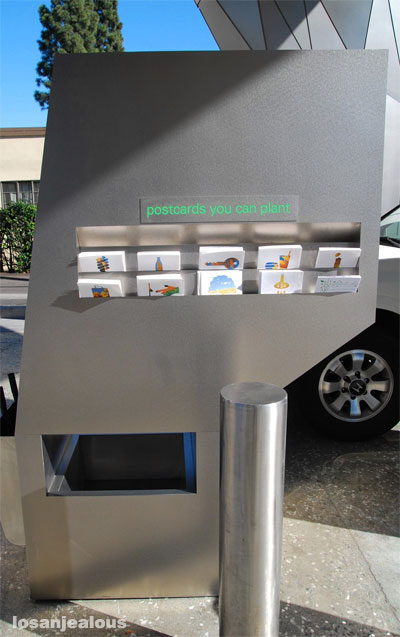
Restrooms: The interior of the bathroom rivals that of any boutique hotel. By the way, the rooms are kept unlocked so you won’t have to squirm in line while you wait for a key from the attendant. The tiles are made from recycled glass and the wood is farmed. There is also a music system control panel that lets you pick songs from BP’s library of tunes while you’re using the restroom. Toilets are operated via a dual flush mechanism–small flush for number one and big flush for number two. (This is becoming common even in non-certified buildings.) The roof is covered with drought-tolerant plants to increase the total landscaped area on the site and to naturally insulate the restrooms.
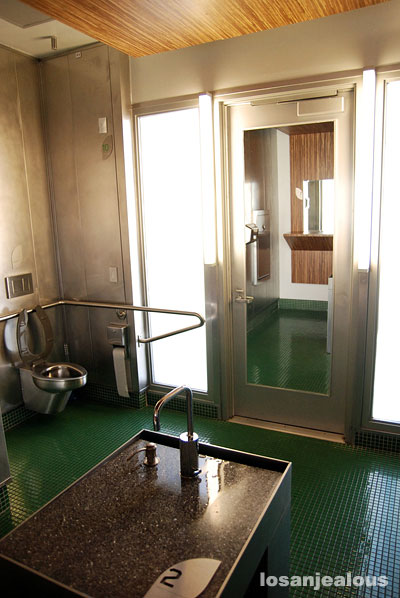
Landscape: Most of the planting material used is of the drought tolerant variety. (Not sure exactly which plants fall under this category but I would bet cacti qualify and Chia Pets would fail.) Rainwater is collected by the large canopy and pumped to irrigate landscaping on site. Some green buildings collect rainwater for additional uses such as urinals and toilets.
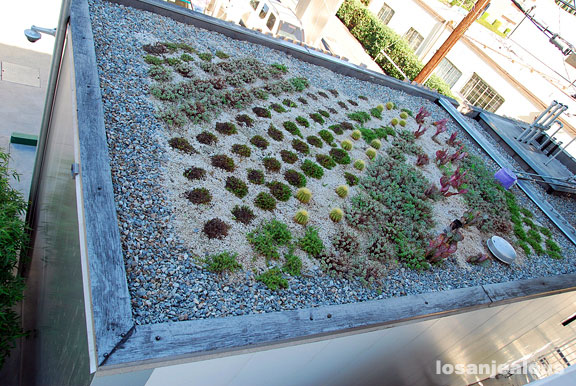
Floor: Recycled glass was mixed into the concrete pavement minimizing heat gain during the day. It also looks cool. Much of the building material from the previous gas station on the site was recycled for this building or used on another building. The station has recycling bins for paper, cans, bottles, and even cell phones.
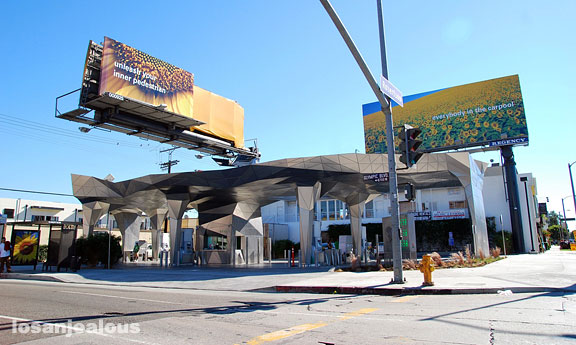
LEED Rating System to Certify Your Building
Photos by the author

